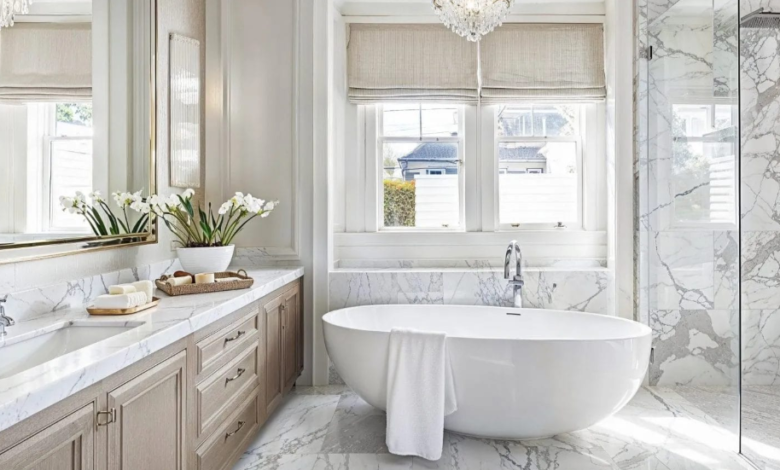Choosing the Right Tiles for Your Stand-Up Shower Space

The transformative effects of a tile upgrade in a stand-up shower can’t be overstated. Whether you’re starting fresh or converting from a bathtub, choosing the right tiles can redefine your bathroom’s look and functionality. Those considering a tub to shower conversion will especially want to weigh their tile choices carefully, as the material and design you select set the tone for your entire shower experience. Investing the time to explore different materials, finishes, and design options can result in a stunning, practical, and valuable bathroom update that elevates your daily routine.
Tiles not only offer a canvas for personal style but also create a foundation for durability and safety. Selecting the wrong type can lead to faster wear, water damage, or a slippery surface, undermining the benefits of your investment. The right selection blends aesthetic desires with practical considerations, meaning your shower will look beautiful and stand up to years of daily use. Understanding how each material, finish, and layout will impact your stand-up shower is essential. Below, you’ll find a comprehensive guide to help you make an informed decision from start to finish, ensuring both functionality and long-lasting appeal.
Understanding Tile Materials
Your shower sees daily moisture and frequent cleaning, so material selection is paramount. Durable, water-resistant tiles add years to your shower’s beauty and function, but the ideal choice depends on your specific needs, style, and budget. Here are the most common tile choices for stand-up showers:
- Ceramic Tiles: Known for their affordability and wide range of designs, ceramics work well for shower walls but may lack the toughness needed for high-traffic floors. They’re available in seemingly endless colors and patterns, letting you achieve anything from bold statement walls to understated, minimalist backdrops. Additionally, ceramic tiles are relatively easy to cut and install, making them a popular choice for DIYers or budget-focused renovators.
- Porcelain Tiles: More dense and moisture-resistant than ceramic, porcelain is a go-to for floors and walls. They are baked at higher temperatures, making them harder and less porous and less likely to absorb water and stain over time. Options mimicking wood and stone are popular for adding warmth or luxury without high maintenance. These tiles are well-suited for those who want the look of natural materials with added practical benefits.
- Natural Stone Tiles: Materials such as marble, granite, and slate inject a sense of luxury and uniqueness. Each piece features distinct veining and coloration, turning your shower into a custom work of art. However, they require higher maintenance, requiring regular sealing to prevent staining and moisture damage. Stone tiles can also be expensive and require professional installation, but their elegance is unmatched for those willing to invest the effort.
- Glass Tiles: These reflect light beautifully, making small showers feel more spacious. Glass tiles are non-porous but can be slippery underfoot, making them best suited for accenting walls or borders rather than entire shower floors. The reflective surface of glass tiles can also add a dramatic flair to your shower, especially when paired with creative lighting solutions or to highlight a niche or feature wall.
See also: Choosing the Right Door Style for Your Home
Prioritizing Safety with Slip-Resistant Finishes
Sleek, glossy tiles may win points for style, but safety is the top priority in shower areas. Wet environments present inherent risks, so it’s important to select surfaces that minimize the chance of slipping, especially on the floor. Look for matte or textured finishes, especially on floors, to minimize slip risks. Mosaic tiles, thanks to their increased grout lines, further help enhance grip underfoot, making them an excellent option for shower pans or curbless designs that require extra traction.
Exploring Design and Layout Options
Pairing the right size, color, and pattern with your desired aesthetic can completely transform a shower’s appearance. Planning your layout ensures the finished space is visually striking and fits the scale of your bathroom. Here are some ways design and layout choices can impact your space:
- Tile Size and Layout: Large-format tiles minimize grout lines, making the space feel open and easy to clean, while smaller tiles provide better traction and flexibility to accommodate slopes for proper drainage. Consider using large wall tiles for a seamless, contemporary look and small mosaics on the shower floor for safety and visual interest.
- Color Schemes: Lighter tones brighten compact showers, creating an airy feel. White, cream, and pale gray tiles especially help reflect available light, giving the illusion of a larger space. Darker hues, on the other hand, can deliver dramatic elegance and make large spaces appear cozier. Pairing dark and light tiles creatively can create bold visual contrasts that add personality to your shower.
- Patterns: Patterns like herringbone, chevron, or stacked layouts break up the space visually and offer a current, designer look. Don’t overlook classic subway tile for timeless appeal. Mixing patterns or introducing accent borders and niches can introduce energy and distinction, allowing your shower to express your unique taste.
Ensuring Proper Installation and Waterproofing
Even the most beautiful tile loses value if improperly installed. Waterproofing is vital: use a reliable membrane behind tiles, such as a liquid-applied or sheet membrane system, to protect walls and subfloors from moisture intrusion. Properly sloped floors ensure water drains efficiently and doesn’t pool in problem areas. Grout lines should be thoroughly sealed to prevent moisture intrusion; regular inspection helps catch damage early. It’s also worthwhile to periodically check caulking and grout for cracks or gaps.
Considering Maintenance and Longevity
Keeping your shower beautiful doesn’t have to be a chore—if you match your material to your maintenance preferences. Tiles in a shower are constantly exposed to water, humidity, and soap residue, so choosing ones requiring minimal upkeep can save you both time and money in the long run. Here’s a breakdown:
- Ceramic and Porcelain: These materials are easy to maintain with mild soap and water and are also highly stain-resistant. Occasional grout cleaning will help preserve their original appearance, and replacement tiles are easy to find if one cracks or chips.
- Natural Stone: Requires regular sealing and cleaning with products approved for stone to prevent etching or discoloration. While natural stone adds irreplaceable character to your shower, neglecting the required maintenance can lead to permanent stains or water damage.
- Glass: Needs routine wiping to prevent water spots and soap buildup. Use non-abrasive cleaners to preserve shine. Although glass tiles are low-maintenance when it comes to stains, they do require more frequent cleaning to avoid looking streaky.
Budget Considerations
Ceramic tiles remain an economical favorite, often the least expensive per square foot, both for material and installation. If you want to upgrade your shower on a budget, ceramic tiles are a practical option that doesn’t sacrifice visual appeal. Porcelain and luxury stone climb the scale in terms of price, as does the complexity of the installation. Remember to factor in long-term maintenance, especially with stone, and installation intricacies—angled benches, niches, or extensive mosaics can raise labor costs substantially. It’s important to get detailed quotes and consider all potential hidden costs, such as sealants, trims, and professional installation fees, to avoid surprises as your project progresses.
Embracing Eco-Friendly Options
Sustainable choices are becoming more accessible for modern bathroom remodels. Many manufacturers now offer recycled glass, porcelain, or other reclaimed tiles. These include everything from glass mosaics made with post-consumer bottles to porcelain tiles from industrial byproducts. Sustainably produced tiles reduce environmental impact and qualify your home for eco-friendly certifications or green remodeling credits. Look for products with environmental certifications, such as GreenGuard or LEED, to ensure your choices align with your values. By choosing eco-friendly tiles, you support responsible manufacturing practices and reduce the footprint of your renovation.
By thoughtfully assessing each element—from tile material to installation and eco-friendly options—you’ll craft a stand-up shower space that is safe, stylish, and built to last. The right tiles can transform this everyday space into a standout feature of your home. With careful planning and informed choices, your shower upgrade will bring comfort, value, and long-term satisfaction.





